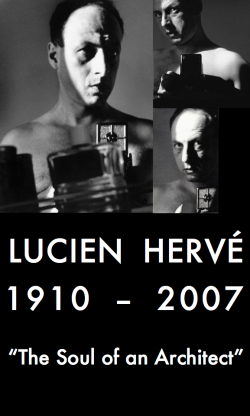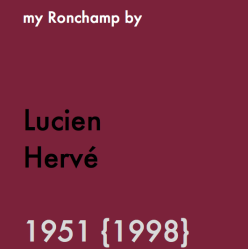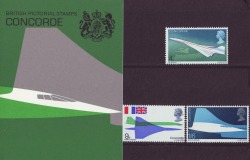DESIGN, CULTURE + ENVIRONMENT | THE PILL TURNS 50 :: THE MARKETING OF THE FIRST MIRACLE DRUG OF THE SPACE AGE
above:
BROWN GLASS BOTTLE
Enovid came in two doses, 10 mg and 5 mg. Like all pill prescriptions of the time, it was delivered in a small bottle. When the [USA] Food and Drug Administration approved it for birth control use in 1960, it had already been on the market for almost two years, as a treatment for menstrual irregularities.
PACKAGING PATENT
David P. Wagner won U.S. patent number 3,143,207 for the first oral contraceptive pill dispenser. He designed the dispenser to be the size of a makeup compact, so women could carry it discreetly in their purses.
ORTHO-NOVUM ADVERTISEMENT FOR THE BIRTH CONTROL PILL, 1963
below:
PROTOTYPE PILL DISPENSER
In 1962, Illinois engineer David P. Wagner made a prototype pill dispenser, three round plastic plates held by a snap fastener. It was the first to organize a monthly pill supply into daily doses.
The bottom plate has the day-of-the-week pattern. The middle plate holds twenty wooden “pills” and rotates to match the day pill taking begins. A single hole in the top plate moves over the pill to dispense it, revealing the day of the week as a reminder that the pill was taken.
– GALLERY: THE PILL, pbs.org
Here’s the article that got this blog post rolling. Mentions of utopia, the future, and that 50-year, 1960s thing all made it compelling that I blog about the Pill today. Not to mention, it’s Mother’s Day:
TRIUMPH OF THE PILL
As the Pill turns 50, the little agent of modernity still arouses trouble
by John Allemang, The Globe and Mail, 7 May 2010
An early (1964) birth control pill: Enovid-E (“Physician’s professional sample”), U.S.A. “Planning Your Family” booklet
This set of images is from the encyclopedic and utterly fascinating MUM (Museum of Menstruation). Who knew? Check it out!
The Globe and Mail’s cutline for the photo above:
“A coy 1964 booklet, ‘Planning Your Family,’ illustrates the use of the iconic Enovid-E birth-control pill and its ‘Compack’ packaging.”
The “Museum’s” take on it:
Look how feminine the woman’s sleeve and nails, and the mirror, are, probably associating proper middle-class (and above) — ‘nice’ — women with the Pill, not slovenly tramps, who would gobble it gleefully!
The flowers (roses), things often associated with menstruation, are yellow, not blood red; the thing the Pill banishes.
Speaking of the fateful task of preventing pregnancy, I feel awful for the women with attention deficit disorder who read the instructions at right. For them, the coup de menstruation would be trying the origami tampon!
– mum.org
I think the packaging for Enovid-E is as iconic as the wonder drug it enfolds. The compact ‘Compack’ is an exemplar of industrial design and consumer packaging. Make-up and birth control: same, same. Pharmacological marketing cosmetic subterfuge at its best. And it certainly looks Space-Agey, with UFO connotations.
David P. Wagner – to the moon!
The woman in the space helmet? Isn’t she perky? But not thanks to the Pill; in her case it’s Tampax that’s sending her to the moon (I do like that MUM).
Even confident enough for space walking!
I’m throwing her in here just to make a pitch for another, vaguely related topic: Space Age Fashion. She belongs in that post under “low couture.”
Here are a couple of blasts from the past from the Mother Corporation, the CBC-Radio Canada. Love those cool Eero Saarinen Tulip Chairs. I can’t tell if they’re the real deal or fakes, but they’re swinging!
It has often been said of the Pill that no other drug has ever been so instantly recognizable by its packaging: that small, round plastic dial pack. But what was the dial pack if not the physical embodiment of the twenty-eight-day cycle? It was, in the words of its inventor, meant to fit into a case “indistinguishable” from a woman’s cosmetics compact, so that it might be carried ‘without giving a visual clue as to matters which are of no concern to others.’ Today, the Pill is still often sold in dial packs and taken in twenty-eight-day cycles.
– Malcolm Gladwell
THE CONTROVERSIAL MARGARET SANGER COINED THE TERM ‘BIRTH CONTROL’ WAY BACK IN 1915 | The Pill Starts Here
“It’s what I call a man’s kind of mildness.”
WALLACE: Mrs. Sanger I thank you so much for taking time out in coming and talking to us here this evening.
SANGER: And, Mr. Wallace, I’ve never smoked, but I’m going to begin and take up smoking and use Philip Morris as my … as the cigarette for me to take.
1957
That’s Space Age! Little atoms orbiting around inside your discreet “fooled you!” packaging.
This PBS site has loads of information and timelines about the drug that changed, well, just about everything:
Photo: Library of Congress
Poster for the Health Education Council, issued by the Family Planning Association. UK, 1969.
Date: 1969
Artist/Maker: Cramer Saatchi advertising agency (advertising agency) Brooking, Alan (photographer) Atherton, Bill (art director) Sinclair, Jeremy (copywriter)
Many people found this poster shocking and even offensive when it first appeared. Contraception was a taboo subject for display in public spaces and the image itself subverts the model’s masculinity. However, these shock tactics were effective in drawing men’s attention to the issue of unwanted pregnancy.
It is a famous example of the power of advertising, and the image has become part of popular British iconography, still referred to and reproduced.
\\\ FORGOT YER MUM? PICK A FLOWER, DOWNLOAD IT + MAIL IT TO HER NOW > EVERY DAY IS MUM’S DAY!
About this entry
You’re currently reading “DESIGN, CULTURE + ENVIRONMENT | THE PILL TURNS 50 :: THE MARKETING OF THE FIRST MIRACLE DRUG OF THE SPACE AGE,” an entry on designKULTUR
- Published:
- 2010/05/09 / 17:48
- Category:
- ADVERTISING, CORPORATE IDENTITY, FASHION, GRAPHIC ARTS, INDUSTRIAL DESIGN, RETAIL DESIGN, SPACE RACE
- Tags:
- "John Rock's Error" by Malcolm Gladwell, "Planning Your Family" Enovid-E, birth control, CBC, David P. Wagner, Enovid-E, Erica Jong on the Pill, family planning, first oral contraceptive pill dispenser, free Mother's Day cards, Gregory Pincus, Happy Birthday the Pill, Happy Birthday to the Pill, John Allemang, John Rock, Malcolm Gladwell, Margaret Sanger, Min-Cheuh Chang, Museum of Menstruation, Philip Morris, prototype pill dispenser, Searle Enovid, Sputnik, the "Compack", the "Pill", the "Pill" 1960 - 2010, the "Pill" 50 years graphic, the "Pill's" 50th anniversary, The Globe and Mail "As the Pill turns 50, the little agent of modernity still arouses trouble", The Mike Wallace Interview - Margaret Sanger, The Space Age, U.S. patent number 3143207, vintage Tampax ad, visions of the future

























































































































































































1 Comment
Jump to comment form | comment rss [?] | trackback uri [?]